Like everywhere in Texas, the city of Galveston has lived several lives and markers abound throughout the city with tales from each of them. After being dubbed “Galves’ town” in honor of the Spanish officer leading an 1785 charting expedition, the island’s first population boom came in 1816. Pirates helping the Mexican rebellion created a pirate kingdom called “Campeche” with Jean Lafitte, a name you will see around town, appointing himself head of government. The U.S. government forced the pirates out in 1821 and the newly formed Congress of Mexico formally established the Port of Galveston in 1825.
As the only deep-water port between New Orleans and Tampico, Mexico, Galveston briefly served as the capital of the newly formed Republic of Texas in 1836. The city continued to grow as the new government encouraged private investment and immigration through the 1840s. Tensions in the U.S. were already brewing when Texas entered the as a slave state in 1845. During the Civil War, Galveston was occupied by Union and Confederate forces. The city is also the site where enslaved Texans first learned of their freedom from the Emancipation Proclamation in the event now known as Juneteenth in 1865. I know, it already feels like a lot…. but buckle up for more!
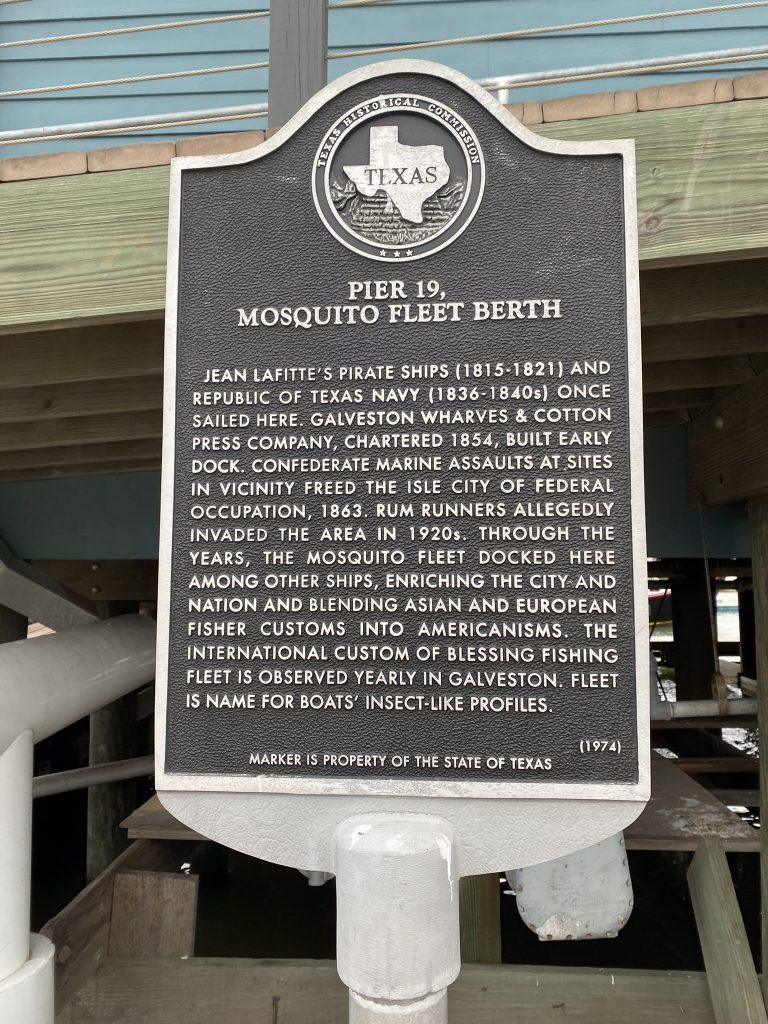
Stroll the Strand Historic District
By the 1890s, Galveston was known as the “Wall Street of the South”, with bustling financial and commercial sectors resulting in the highest number of millionaires per capita in the U.S. The stunning Strand Historical District highlights the prosperity achieved after the Civil War. Interestingly, this city enjoyed many firsts in the state of Texas including telegraphs, telephones, electricity in homes and streetlights.
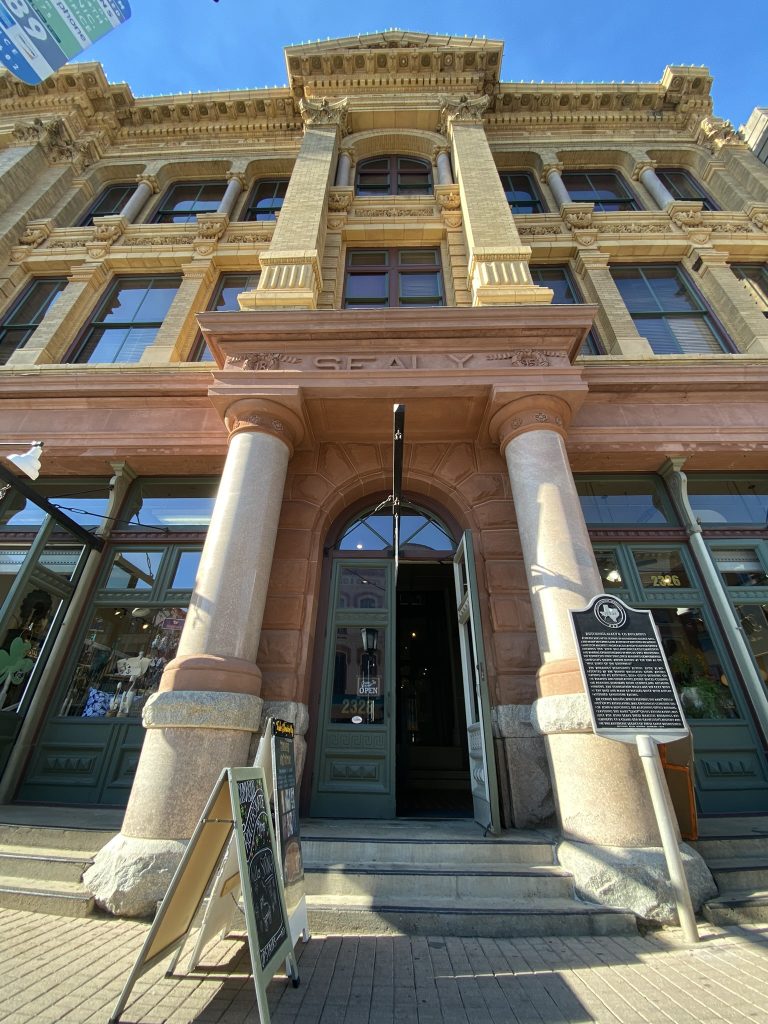
Colorfully detailed nineteenth century architecture boasting high ceiling commercial spaces topped by living quarters and wide sidewalks just beg for a stroll with a beverage (that’s right, open consumption in plastic containers is allowed). The contrast of 19th century charms with stunning murals and art installations gives the city a vibrance that keeps even the least engaged teenager looking around the next corner.
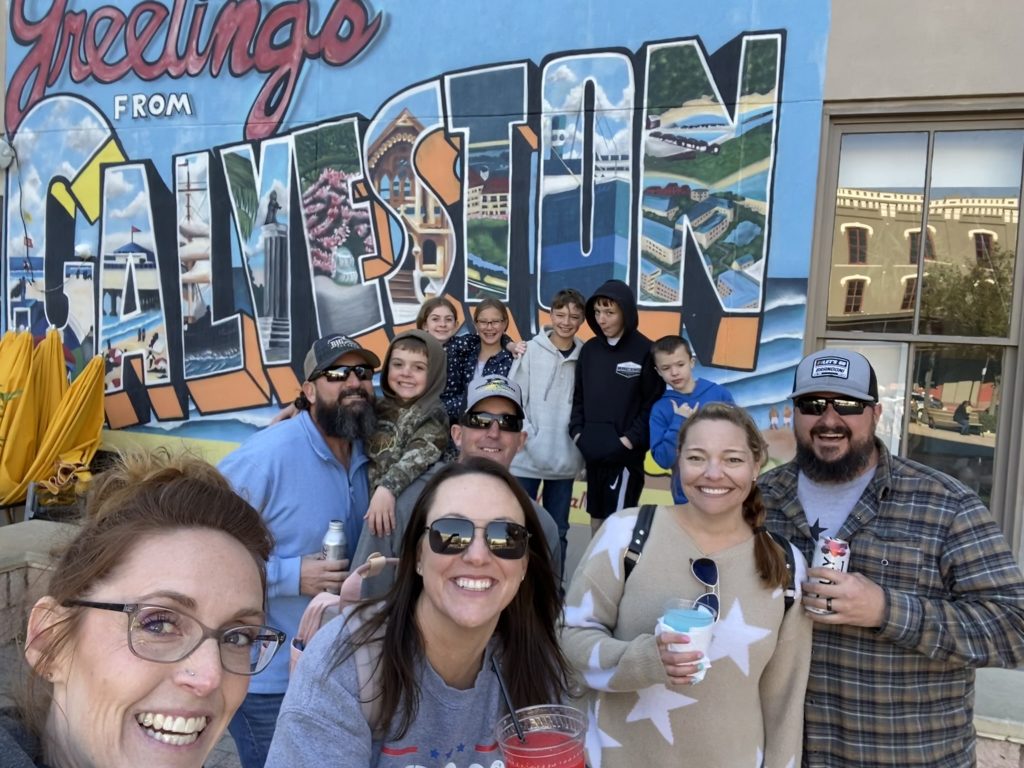
While one might think the exceptionally tall curbs have something to do with flooding, they are actually the perfect height for passengers to access the carriages which filled the city long before motorcars and trolleys. $1 will get you a ride on the first Trolley tracks in Texas with lines down the famous Strand and connection to the Seawall.

Grab some delicious grub
Our favorite stop on the Strand was La King’s Confectionary. Founded in 1927 in Houston, this place as been serving 19th-century treats and and 1920’s fountain sodas as a Strand cornerstone since relocating here in 1976. The kids loaded up on hand made fruit leathers and ice cream. I got some delicious chocolates and my all time favorite snack, the affogato (ice cream with a shot of espresso).

With such a big group (and half being under 14), we didn’t spend much time in restaurants this trip. If you’re interested in an amazing view of the historic harbor and fabulous service, our definite favorite was Katie’s Seafood House. You need the Butternut Crab Butter Bisque, boudin balls and the gigantic cheesy bread was hit with the kids. We had ok food and long waits at Brechachos Tacos and the Stuttgarden Tavern. Both were still struggling to recover staffing from the pandemic while being slammed by Spring Break traffic, so I don’t want to unfairly judge them given the circumstances.
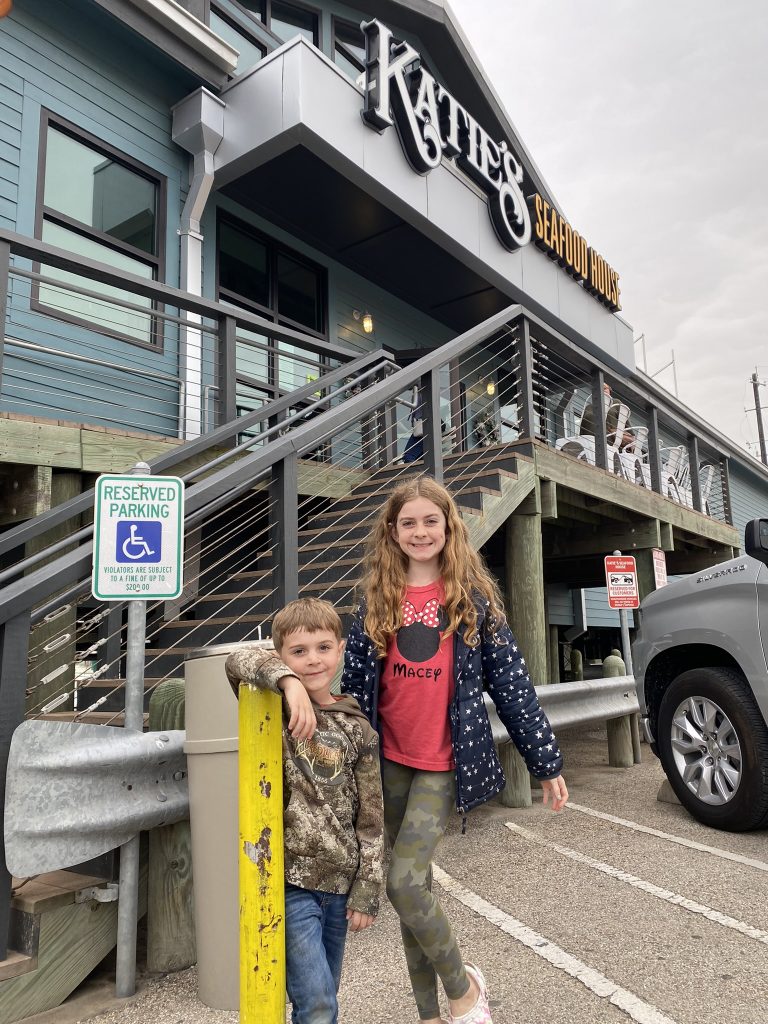
Galveston’s Historic Homes
Remember all those millionaires? Several opulent mansions including the Bishops Palace and Moody Mansion, can be visited for a fee. The tight tour hours and individual cost at each facility simply didn’t line up with our trip itinerary this trip, but next time we will definitely be planning a day to peek inside!
Gorgeous homes are sprinkled on every block of the island. Ranging from beautiful Victorian to laid back Caribbean, modern and sleek to simple row houses, each paint a picture of how varied the experience of historical residents would have been. What will your favorite be?
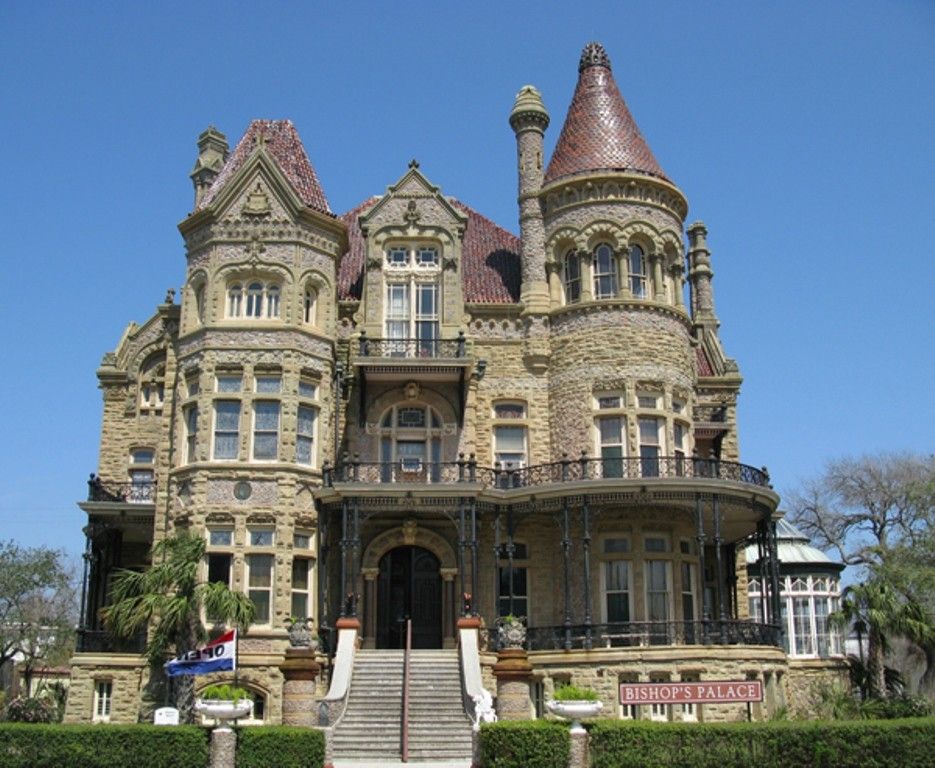
The Great Galveston Hurricane of 1900

Everything changed when the most deadly natural disaster on U.S. soil roared ashore September 8, 1900. The island’s population had weathered several hurricanes before, but thought themselves immune to one devastating enough to level their little haven. After hearing a weak tropical storm struck the Dominican Republic and Cuba days before, residents didn’t think it would be of much consequence and few chose to evacuate to the mainland. *Science alert: by late summer the gulf water is very warm, refueling hurricanes that have weakened on the Caribbean Islands. This results in many of the strongest hurricanes in history, including the category 4 monster that became synonymous with the town it ravaged.
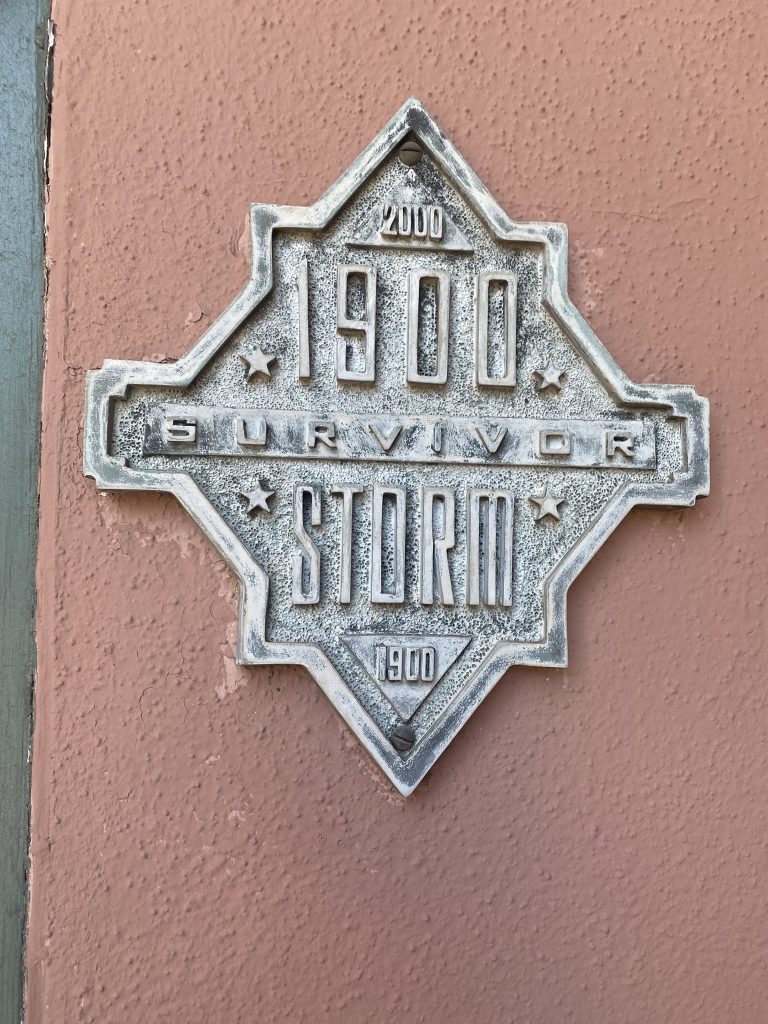
What wasn’t blown apart by the 145mph winds was partially submerged by the 12ft storm surge of water. Of the 38,000 residents, between 6,000-12,000 died and 10,000 more were left homeless. After many disasters, the wreckage is too much to bear. Many inhabitants, including business owners and investors, left the island for Houston and elsewhere.
Admire Galveston’s Seawall
Those who stayed decided to construct a mammoth 17ft tall seawall to raise the level of the city and protect it from future storms. Some viewed it as a destruction of the large sweeping beachline enjoyed by thousands each year. But others saw opportunity to create another site for entertainment.

Explore Galveston’s Piers
During Prohibition, Galveston became known as “Sin City of the Gulf” with its remote location being the perfect place for gambling and speakeasys to abound. Entertaining the rich and famous from Houston and abroad required luxurious hotels and casinos such as the Balinese Room, which was destroyed by Hurricane Ike in 2008.

Today the Seawall still protects the first 10 miles of the island’s gulf side, supporting the highway and providing access to the flat soft sand that runs the length of the island. Four piers remain along the stretch. Two are fishing sites: the Galveston Fishing Pier at the south end of the seawall and the 61st St Pier about halfway down. Closer to the town, Murdoch’s has a beautiful deck and lots of souvenirs and the Pleasure Pier is a full blown amusement park with all day passes for riders under 48″ costing $21 and above 48″ running $28.

Since we stayed in a beach house rental 20 miles farther down the island, fighting the spring break crowds for parking to enjoy the same sand we had at our backdoor didn’t make sense. Most of the businesses are separated from the beach by the highway and beachfront facilities are sparse. If you do want to take in some rays by the seawall (especially with kids), plan to pack heavy because where you want to hang will be a hike from refills, restrooms and probably your ride.
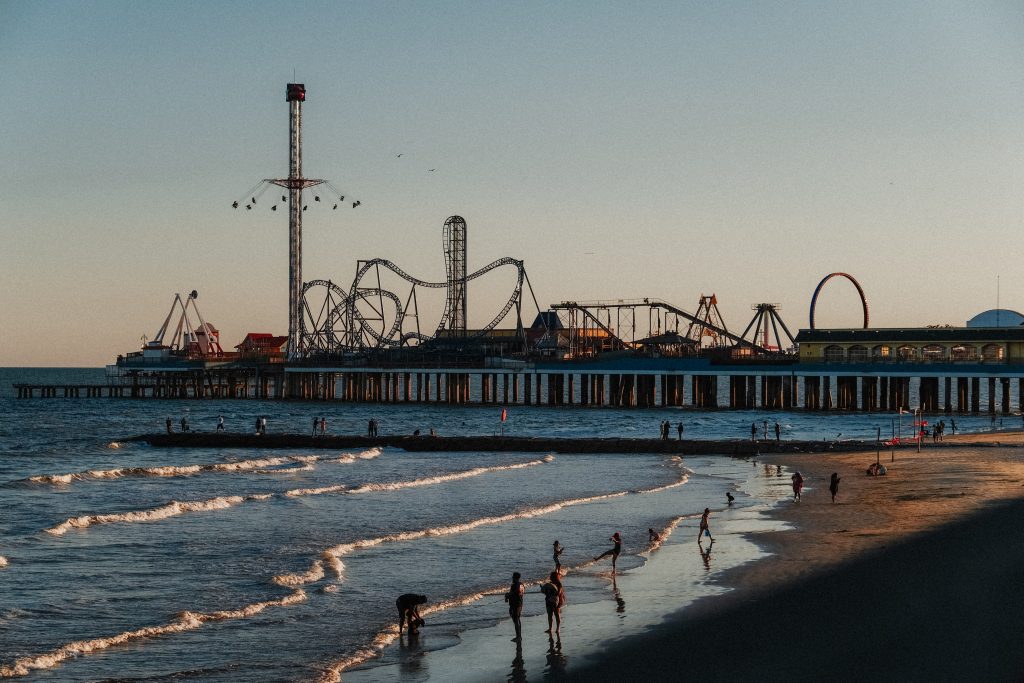
Learn about Galveston’s Industrial History
I find a certain beauty in the aging warehouses and industrial relics. Wealth always comes from incredibly hard working people whose stories I try to uncover when we are in historic locations like this. You can’t miss the imposing Ice and Cold Storage Smokestack, but it took some research to uncover that it’s the only remnant from a facility that produced 70 tons of ice per day for residents’ enjoyment and seafood storage.

Checkout the Railroad Museum
What’s more industrial than the railroad? Many people who are disconnected from the freight industry think railroads are a artifact of the 1800’s. But as you enter Galveston via the Causeway from Houston, the parallel rail bridge that branches into a dozen active tracks highlights how the railroad enhanced the city’s prominence. The Galveston Railroad Museum details how connecting the warehouses of goods from the shipping lanes to the mainland helped the city grow after the Civil War and continues to provide a pillar of industry today. Located at the western end of the Strand, the experience is 1-2hrs and costs $12 for adults, $6 for kids and under 3 free.
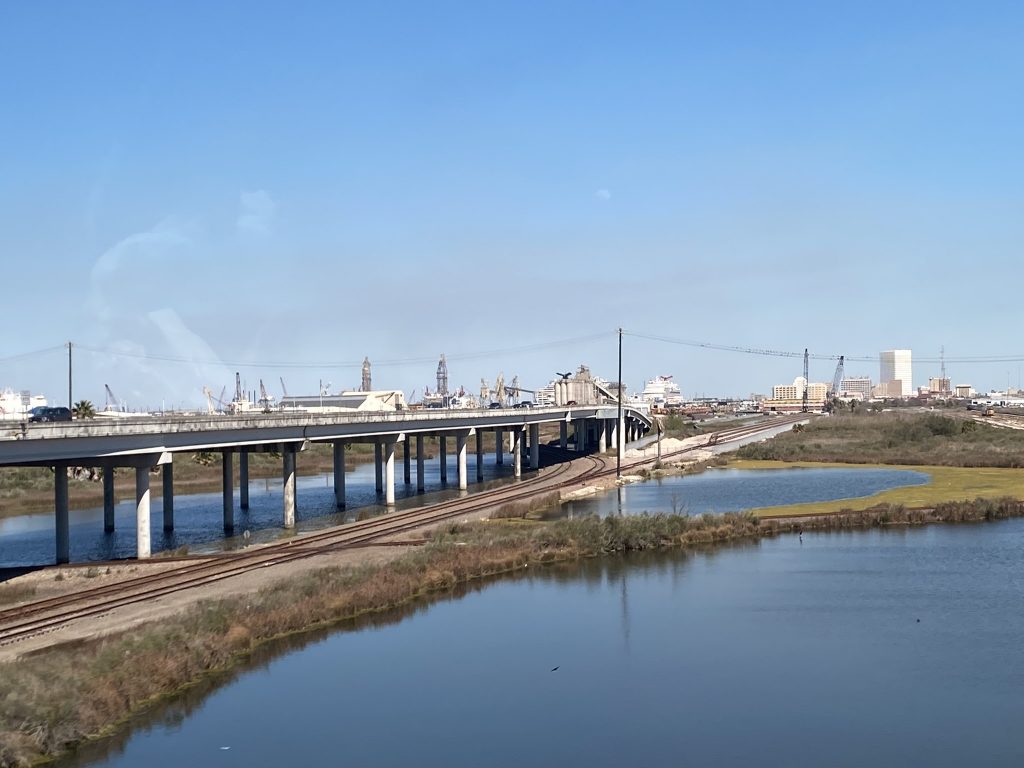
Hop on a rig at the Offshore Drilling Museum
How can you talk about the Gulf without mentioning petroleum? The Oceanstar Offshore Drilling Rig and Museum offers a glimpse into the oil and gas industries aboard a retired drilling rig. The whole experience takes about an hour and costs $10 for adults, $6 for youth and free under 6yo. While visiting, you will find yourself surrounded by dozens of rigs waiting for their turn in the gulf and many days you can see a cruise ship making port.
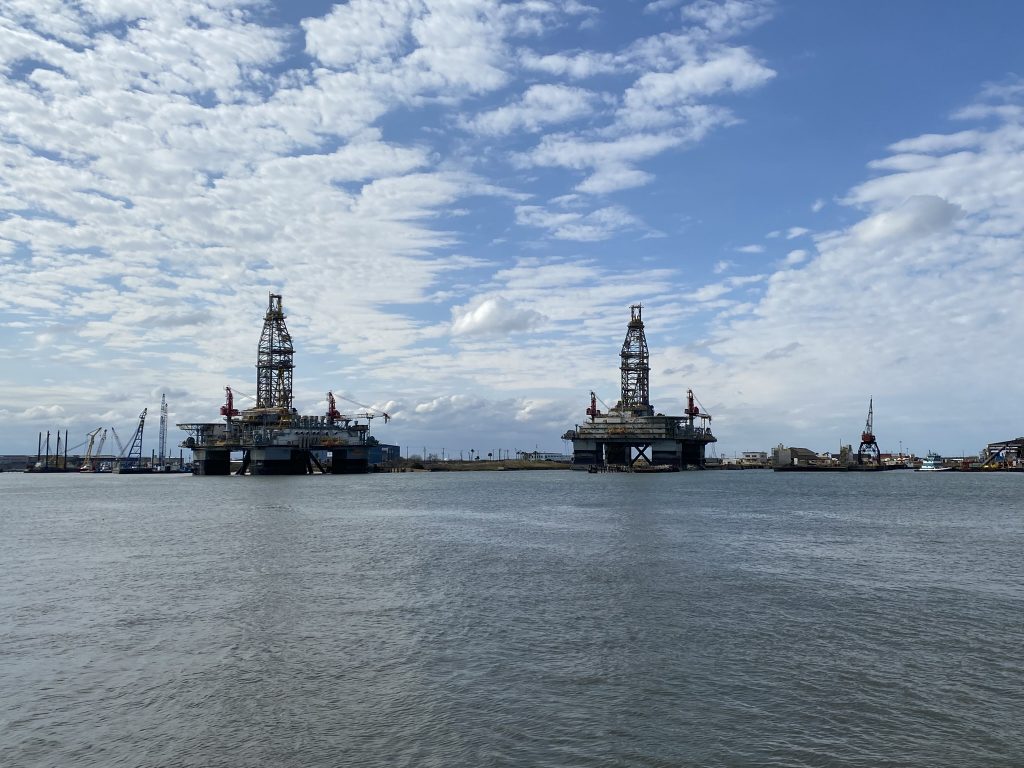
Texas’ Official Tall ship Elissa
The craftsmanship of Texas’ Official Tall Ship Elissa rivals any piece of antique furniture in a mansion I’ve seen. While not the very oldest active ship in the world, Elissa is close, and every inch oozes with 19th century charm. Launched from a Scottish shipyard in 1877, the ship served many functions for many owners before being abandoned in a Grecian shipyard. Repairs were made after being purchased by the Galveston Historical Foundation in 1975, and the ship was brought across the Atlantic to be fitted with 3 new Douglas fir masts from Oregon and 19 sails from Maine.
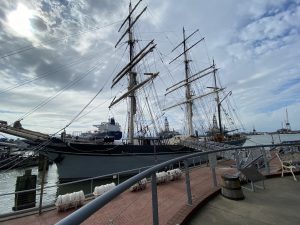

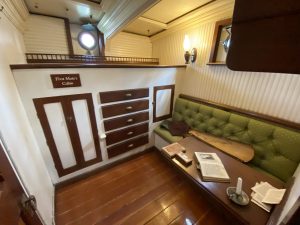
It feels like you could get lost for days trying to make sense of the intricate web of ropes suspended from the towering masts. My husband loves boats and enjoyed showing the kids how the crew used the steering wheel and compass to ensure the boat stayed on course. Below deck, the Captain and first mate’s quarters contained beautiful couches and intricate cabinetry. Even the crew’s quarters on the lower deck were luxurious compared to 1940’s wartime accommodations in nearby ships at Seawolf Park.
We got to Elissa right before closing and didn’t have time to peek into the museum dedicated to telling the story of the waves of people who traveled through or called Galveston home, which sadly included hundreds who would enter the port to spend their lives in servitude.
Missed Connections
You’d think 4 days would be enough do everything in an island town, but boy were we wrong! Here’s our list of the super cool things we missed in Galveston:
- The 1-hour Historic Harbor Tour and Dolphin Watch mixes the waterside history of the town with animal viewing in their natural habitat. At $17 for 6 & up (younger free), it will be our first book next trip.
- Our friends did a walking Taste of the Strand restaurant tour on a previous trip and couldn’t speak more highly of the experience. We’ll definitely give it a shot next time we’re in town.
- Word on from the locals is that there is a fun little oasis with peacocks near the grave of famed Pirate Lafitte. The weather was so wonky we just didn’t get there, but that’s what return trips are for.
- Chilly spring break weather was not the time for the Shlitterbahn Water Park, but if we return in warmer months, we’ll gladly spend $40 each to ride slides all day!
- Moody Gardens has a lot of novel experiences packed into one location, but at $60-80 per person, it just wasn’t in the budget this trip.
- If you’ve never taken a tour of a city by land and sea on the same vessel, a ride with Galveston Duck Tours might be just for your family at $30 for adults and $20 for children.
- We’re not into scary things, but apparently there are several haunted tours including Galveston Ghost Tour and Ghost of the Strand Tour if that kind of stuff floats your boat.
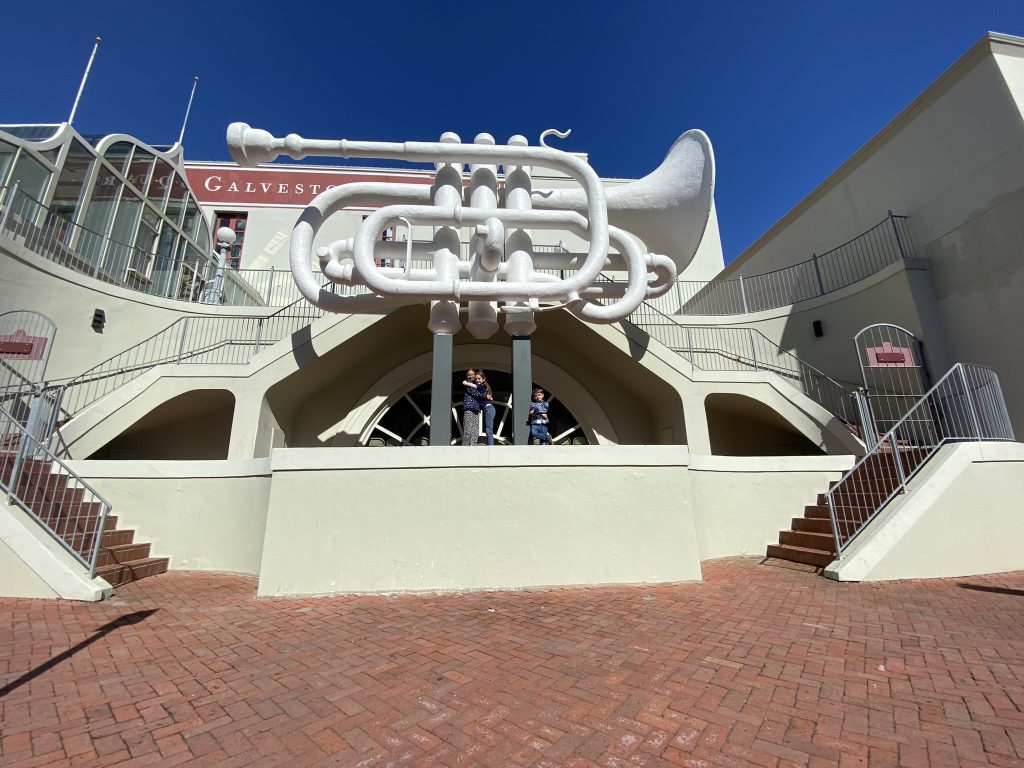

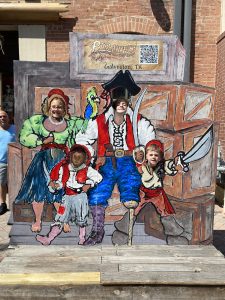


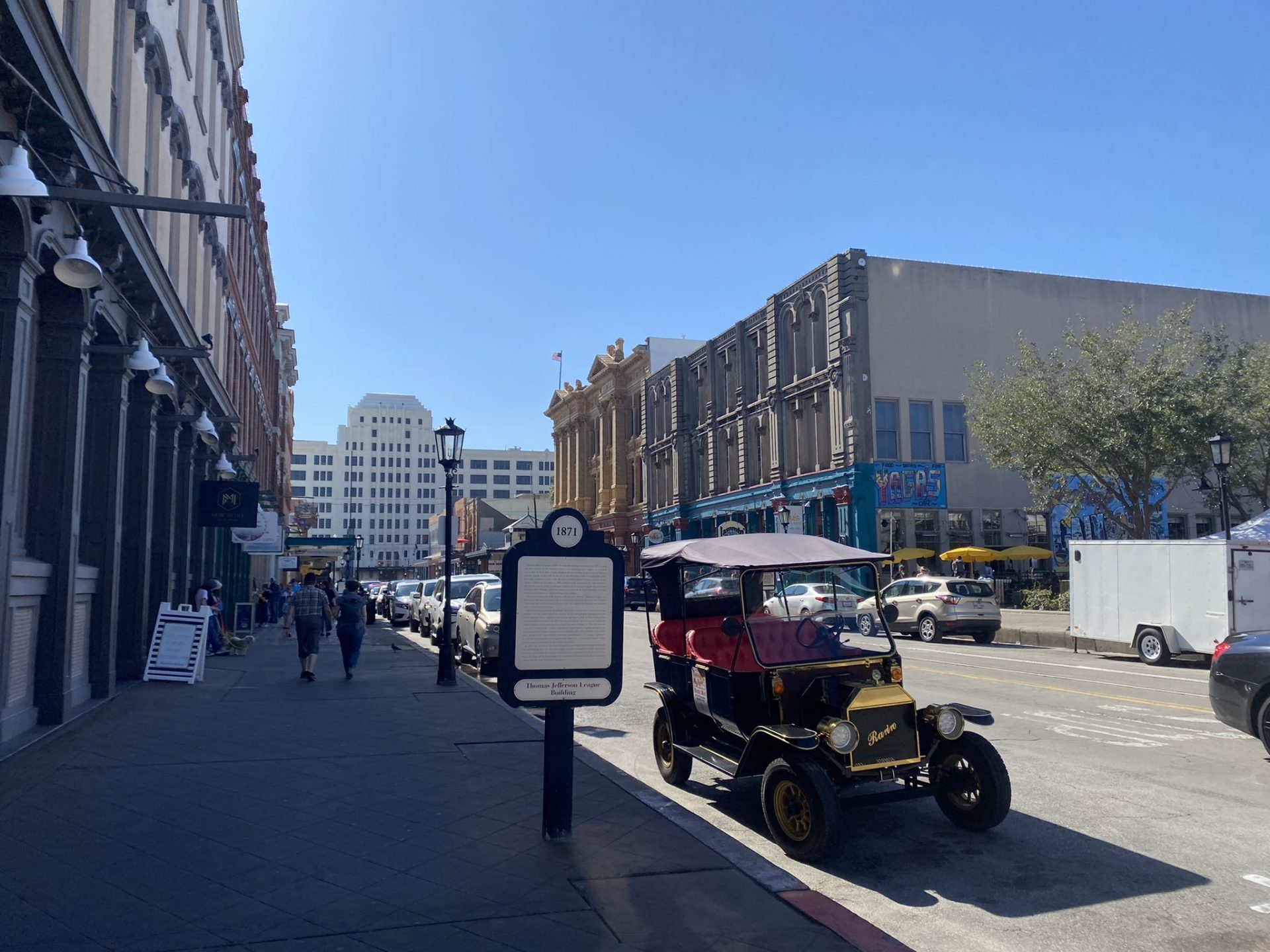
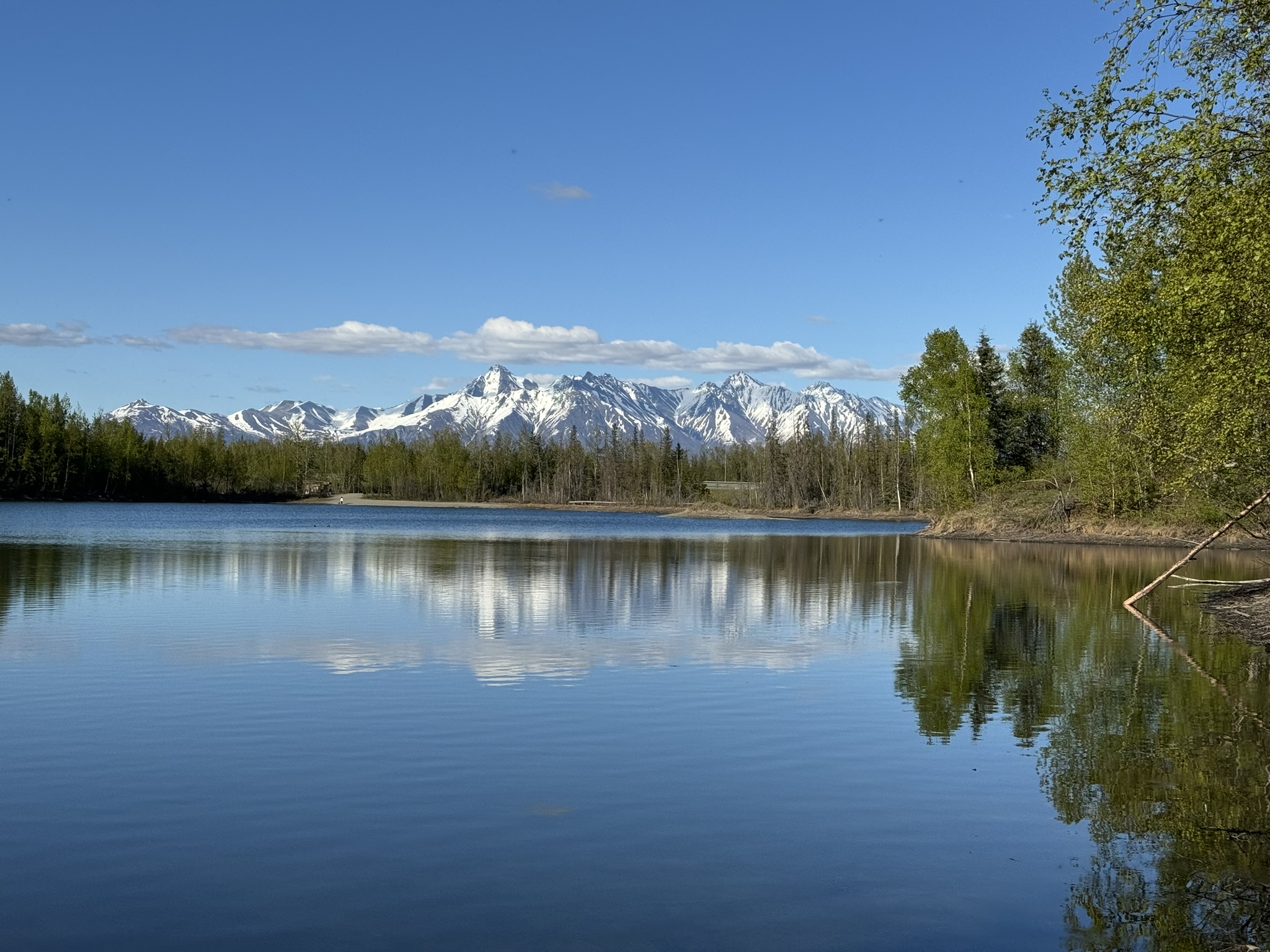
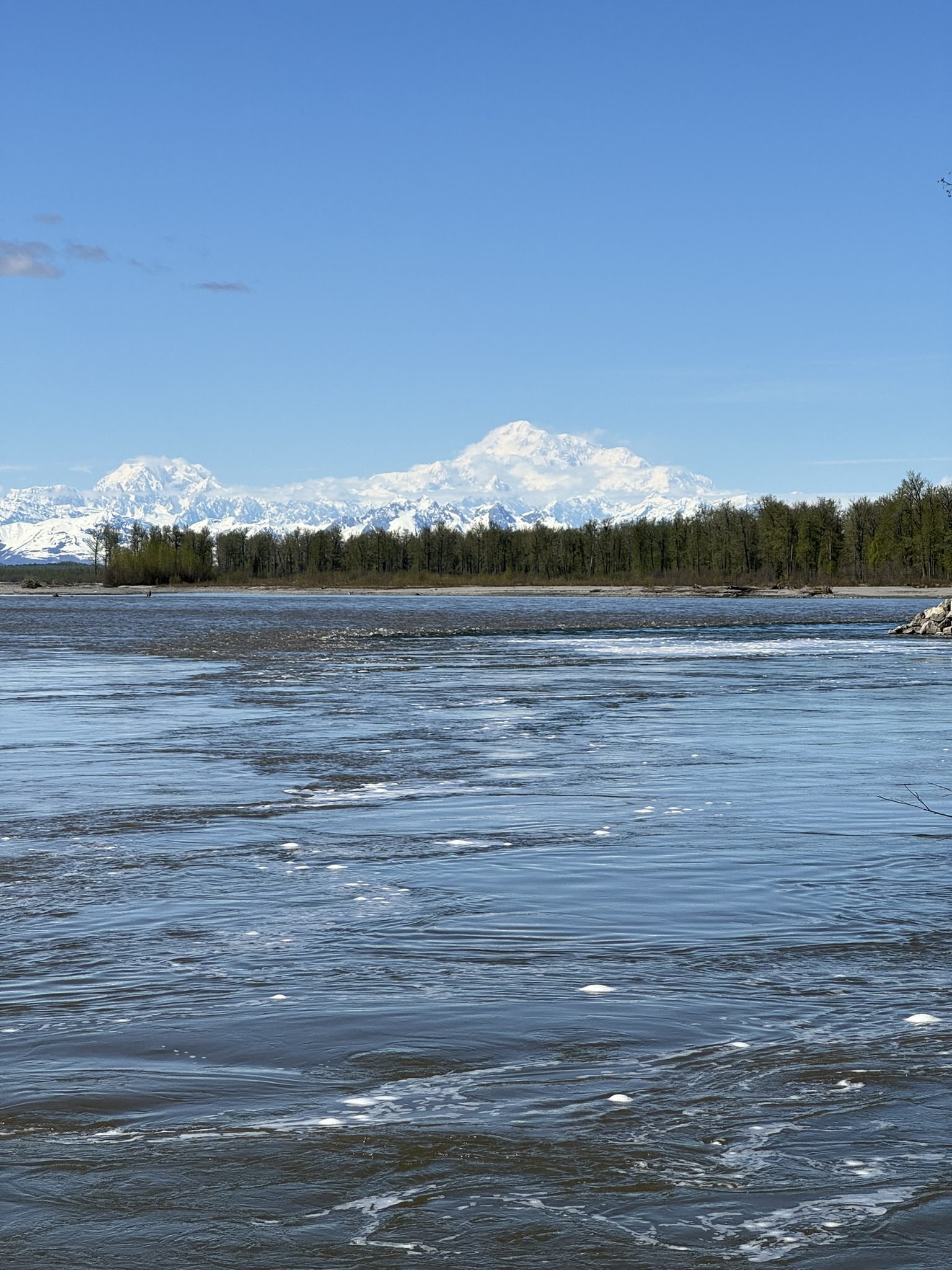

Your blog provided us with valuable information to work with. Each & every tips of your post are awesome. Thanks a lot for sharing. Keep blogging..